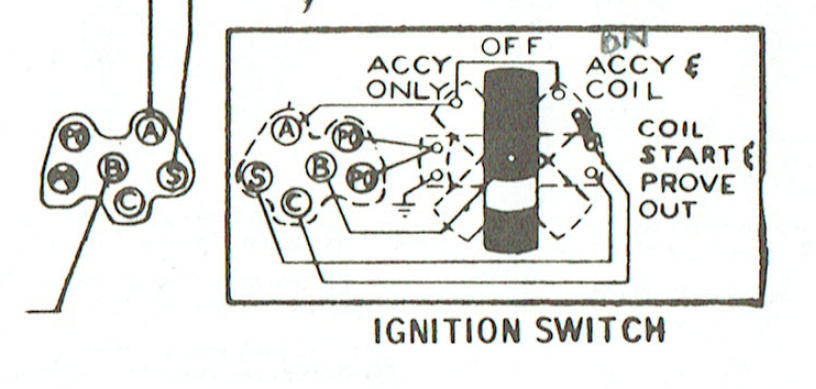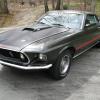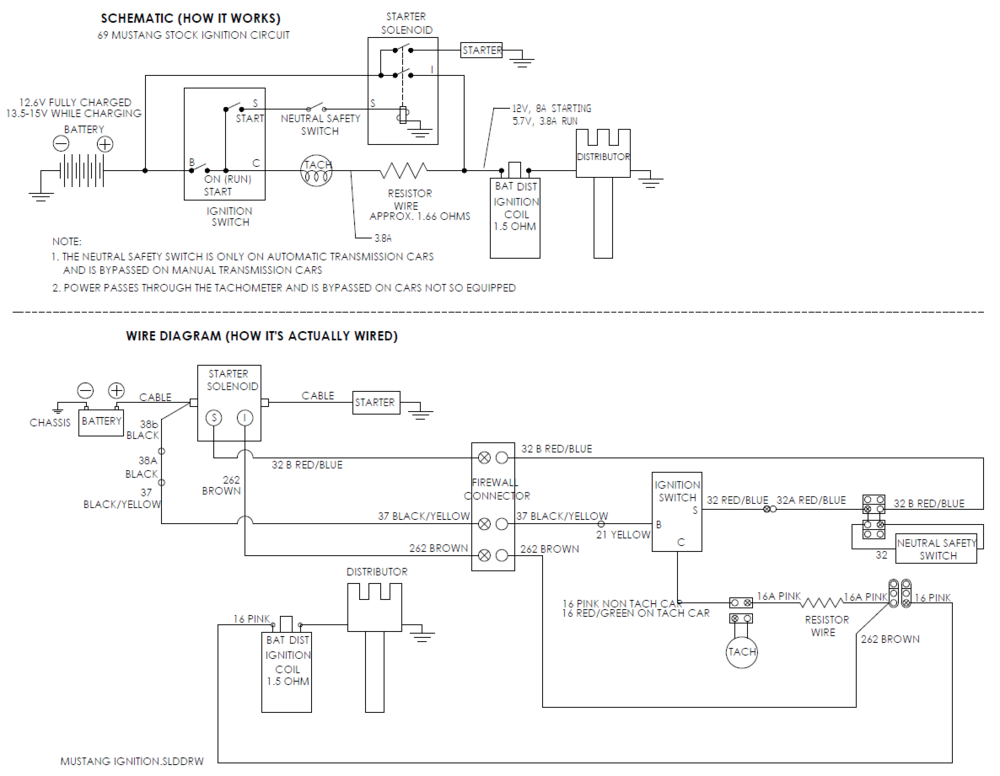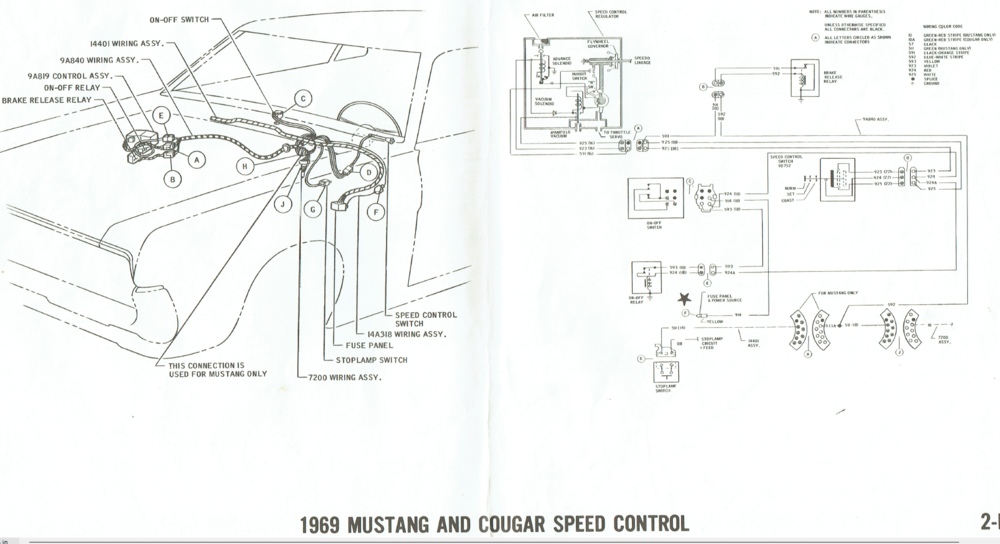-
Content Count
2,134 -
Joined
-
Last visited
-
Days Won
86
Posts posted by Mach1 Driver
-
-
-
Makes you smile doesn't it ;)
-
Since they raced our cars back in the day without electronic ignition systems, just using the stock coil with points and a condenser, it seems the only thing the electronic systems do is add complexity (something else to fail) and lighten your wallet. I'm not saying they don't work, they just aren't really needed. However I do see the need for a rev limiter, and that was an option even back then.
All of that being said, I see that Pertronix sells the 600 Digital Rev Limiter, but I have no particulars on it.
-
-
-
Huh, look who's complaining about his welds!
-
Nice, LIKE
-
So you're going to be able to rotate the axis of the wheels in relation to the pipes in case you want to move it sideways?
-
Thanks for the shots, I do love blue.
-
Nice work and tips Ed.
-
I've not seen a book with a red cover. I have the blue Forel Part and Body Illustrations information, and it is about as good as it gets. If you have Osborn, it may be more of the same. The Helm manual may have a few more illustrations and a very brief description of what to do, but not much, and not very helpful.
-
Ah come on- ya gotta give us an overall nose shot of the car with that beautiful blue. Nice pics by the way ThePosse.
-
-
-
15 hours ago, Ridge Runner said:I cant even hardly open anything with the full page pop up ads ,they dont want to click out ,my ad blocker is on ,this just started when the forum cam back this time
Ridge, use uBlock Origin- it gets rid of all ads
-
3 hours ago, EastYorkStang said:Does this apply to 1970 units ?
The schematic has been the same from 65 thru 69, so they all work the same way. The changes I know of in the 70 are: they moved the ignition switch to the column, totally screwed-up the turn signals (in a one year wonder), and installed the first fusible link in a Mustang. But I don't think there are changes to the ignition circuit- the 69 and 70 are brother cars and similar in most ways.
HOWEVER, how they actually ran the wires does change through the different years... remember how I said that a wire diagram and a schematic are different? The electrons do follow the path of the schematic, but there are an infinite number of ways to get them there with different routing, wire colors, wire numbers, and plugs. I don't have a 70 diagram so I can't be certain.
-
I saw this post on VMF today by Chock, who is the preferred rebuilder of steering components for our cars:
https://www.vintage-mustang.com/threads/restoring-a-classic-mustang.1220913/#post-10922033
Google: Chockostang
-
1 hour ago, rwcstang said:Im not sure if you mods have this contact support access, but the company who supports this domain will have access to implement the security feature, they can provide the service. From searching the history of this site through Google, I found this https://www.wmtips.com/tools/info/1969stang.com maybe you the mods can contact them on behalf of bswor but any final decision will need to be approved by him unless he adds someone as a secondary approver.
Data Center - HostDime
Domain - godaddy.com
Seems this site is registered until 2025, and they do offer 3 tiers of security, Im just not sure tier we have. Assuming we only have the standard one, which makes sense as to why we are getting all these posts running the site to the ground. https://www.godaddy.com/web-security/website-security
Captcha can be implemented in certain ways, but usually during the first time user account setup or login, the captcha will appear due to a unknown IP it doesn't recognize.Great info! I'm going on the assumption that Bob and Phil have a better chance of getting through to Ben. Can you guys try to ask Ben what level of security the site has, and if he can implement Normal Captcha or Recaptcha v2-3?
-
Many people have trouble with the ignition circuit, but if we break it down into small chunks it’s not that difficult to understand. Look at the schematic because it shows you how it works, while the wiring diagram shows you how it is wired- they are two different things.
The RUN circuit
- If we temporarily forget about the top half of the schematic (starter solenoid and starter), you can see that the part that actually runs the engine is pretty simple.
- Power starts on the left at the battery and goes to ignition switch terminal B. B is closed to C in “start or run” but right now we are only interested in “run”.
- From terminal C the power goes through the tach (if your car is so equipped). If you don’t have a tach the wires are just connected together.
- Then the power goes through the resistor wire. This is to knock the voltage down from 12v to around 5.7v. This lowers the power through the coil and makes the points last longer.
- Next it connects to the coil Bat terminal, flows through the coil’s primary winding and out the Dist. terminal.
- Power flows from the coil’s Dist terminal to the distributor. There it connects to the points.
- For a transformer (the coil) to operate it must have a fluctuating magnetic field. The points opening and closing provide that by turning it on and off over and over again. The points must be gapped properly and be in good condition to allow power to flow through them. The points are attached to the breaker plate, and it has a ground wire that attaches to the body of the distributor. The distributor is bolted down to the block, and the block must have ground straps going to the chassis. That completes the circuit, and All of these wires must be connected securely. The condenser is an old fashioned term for a capacitor. Its only job is to quench the arc across the points so the points last longer.
- The high voltage circuit begins with the secondary of the coil, then the coil wire that runs from the coil to the distributor cap. The cap must be in good condition with no high voltage arc paths to ground. Likewise with the rotor, and plug wires. The plugs must be gapped properly. That is everything to make the engine run… as long as the timing is set to allow the rotor to swing by the plug wires at the proper instant. The dashed line with arrows shows the hi-voltage path from the secondary coil through the rotor to the plugs, to chassis then back through the chassis to the points and returning to the secondary coil.
The Start circuit
- Now let’s get the engine started. As we said earlier, power goes from the battery to ignition switch terminal B. When the key is in the “start” position it will go through to terminal S.
- If you have an automatic transmission it will go through the neutral safety switch. With a manual transmission these wires are just connected together.
- Then it goes to starter solenoid terminal S and from there through the solenoid coil to ground (chassis). The starter solenoid is just a big relay.
- The solenoid coil pulls in a set of contacts and closes them. One runs the starter motor and the other goes to terminal I.
- The wire from terminal I to the coil Bat terminal applies power directly from the battery to the coil. This “shorts out” the circuit we discussed in 1-4 above and instead of 5.7 volts at the coil, now it is a full 12 volts. This gives the coil more power and makes the engine easier to start.
-
-
Its not the neutral safety switch- the ignition switch may be wired wrong, but more probably it is a bad ignition switch. I would check the switch with an ohmmeter.
The key positions are: ACCY, OFF, ON, START
B to C in ON and START
B to S in Start
B to A in ACCY and ON
PO (prove out) to the body of the switch in START

-
Its 4:22 am on 3/1/24 and the site is up again, having been down for most of last month. It is infested with bots. Phil and Bob will have a good time deleting all the posts.
-
-
Sorry about the dogs. Goldens are my favorite breed- they are big happy goof-balls. I still miss mine from 40 years ago. Have fun with the little fur ball.









Bandwidth issue
in The Garage
Posted · Report reply
Well thanks for helping to clean up around here guys. We all appreciate it. I tried liking Ben's post but that still doesn't work.